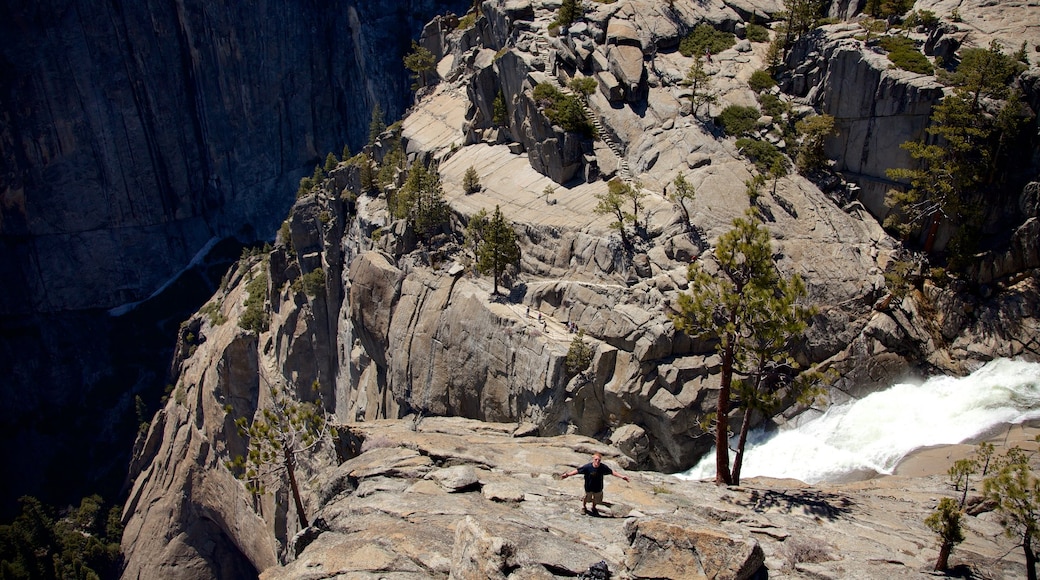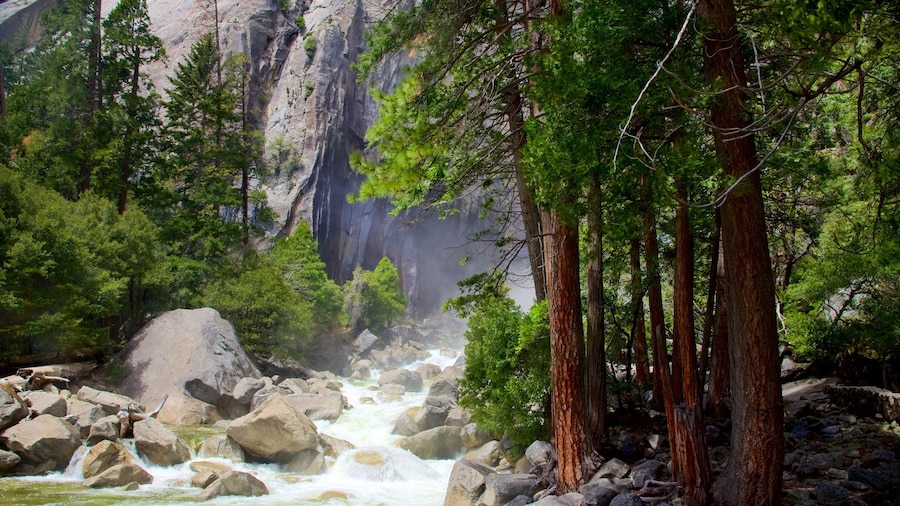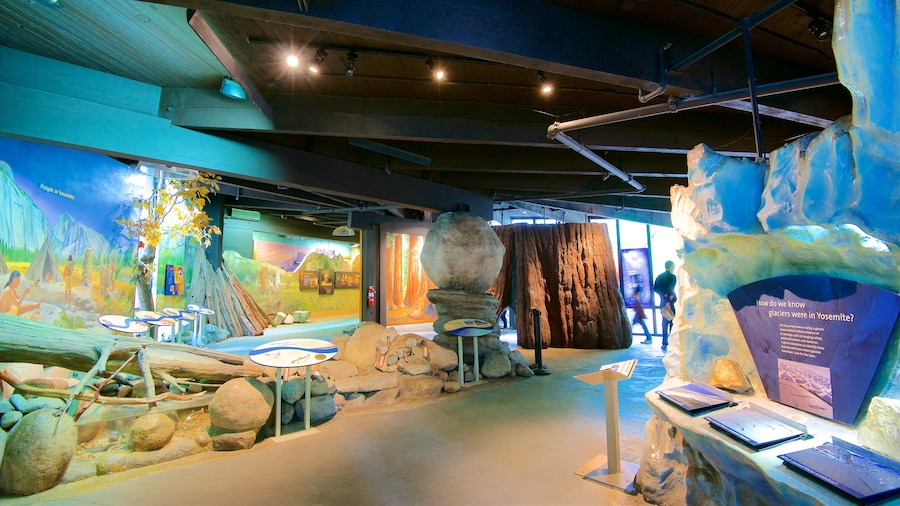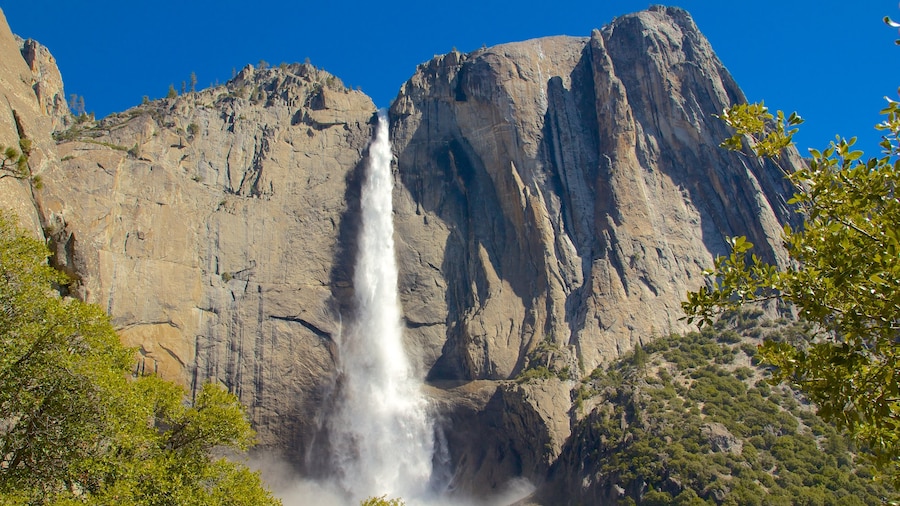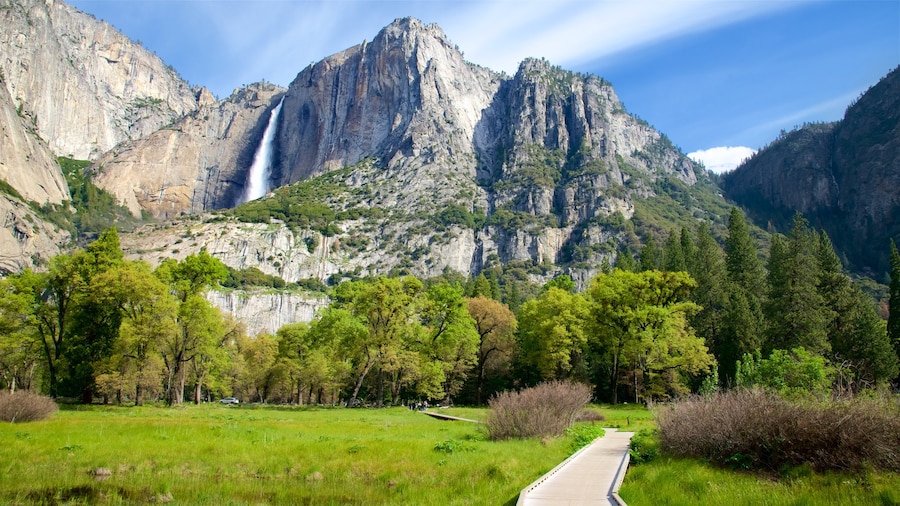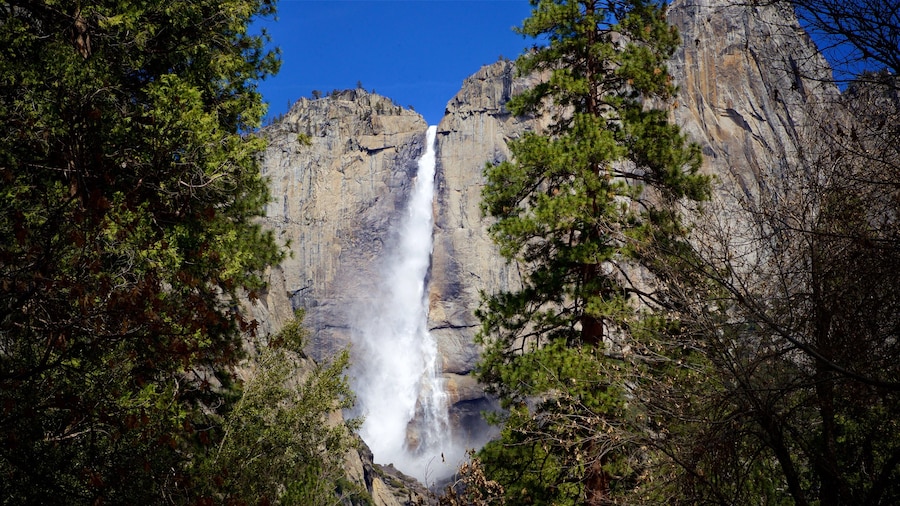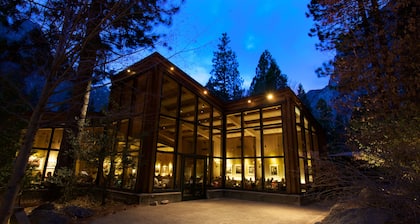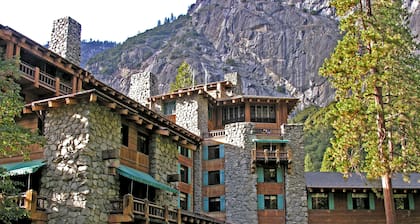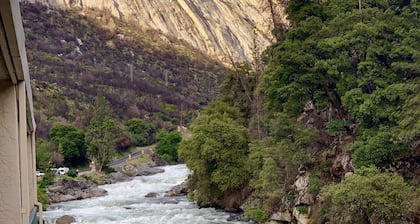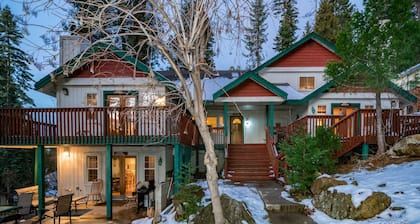Yosemite National Park sets the bar high for magnificent natural beauty, but Yosemite Falls is indisputably one of its most striking features. This towering waterfall is one of the highest in North America. Water plunges a total of 2,425 feet (739 metres) from top to bottom of Yosemite Falls in three distinct sections.
The 1,430-foot (440-metre) drop of Upper Yosemite Falls is impressive by itself. To experience its deafening power up close, follow one of several trails between its base and top. Note that the hike to the top of Yosemite Falls is strenuous and will take all day.
The Middle Cascades are a series of five small falls. These don’t have great public access so many people miss them entirely.
Although Lower Yosemite Falls is the smallest portion, its accessibility makes it the most popular viewing point for the waterfall. Explore it via the popular 1-mile (1.6-kilometre) loop trail or take the free shuttle bus to the base of the falls.
The most dramatic time to visit Yosemite Falls is in May or June, when the runoff from snowmelt creates an impressive cascade with a deafening roar. By the end of summer, most of the snow in the high country has melted and the falls are reduced to a mere trickle.
If you visit in the spring, look for a moonbow, also known as a lunar rainbow in the spray from the falls. In winter, a unique “snow cone” formation develops at the base of the falls.
Yosemite Village is nestled near the foot of the falls. This quaint town is a great place to stop for a snack or souvenir. If you want to stay overnight, get a room at Yosemite Lodge. For a more rustic experience, bring your tent or RV to one of Yosemite’s many rentable campsites. Book well in advance to ensure you can get accommodation.
While visiting Yosemite National Park, seeing Yosemite Falls is a must. You might get a little wet, but it is well worth it to experience this natural wonder.




